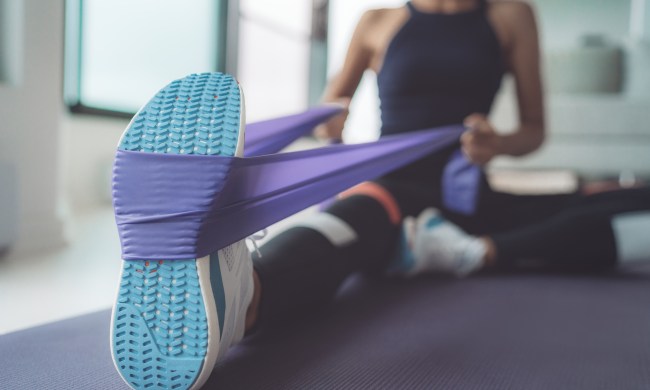
The good news is that plantar fasciitis is treatable. The bad news is it can linger for quite some time before it gets better, and it can be extremely uncomfortable while it lasts.
Research has come a long way when it comes to this condition, so take advantage of the science and learn what causes plantar fasciitis, how you can treat or prevent it, and when to call your health care professional.
What causes plantar fasciitis?
Plantar fasciitis (pronounced PLANT-are fash-EYE-tiss) happens when inflammation strikes the band of tough, fibrous tissue that connects your heel to your toes, much like the string of a bow. The name of this tissue is the plantar fascia, hence the name of the condition.
Sharp or aching pain at the bottom of the heel is this condition’s primary symptom. It often comes about because of high-impact activities that put stress on the feet, like running, jumping, or even extensive walking. Older adults, people who are overweight, and those with fallen arches or “flat fleet” are particularly susceptible.
Stop it before it starts
The key ingredients for preventing and treating plantar fasciitis are simple: stretching, stretching, and more stretching. This keeps the plantar fascia elastic, reducing inflammation.
Follow these basic techniques to help keep the plantar fascia in tip-top shape.
- Toe curls: Grab a T-shirt, an old sock, or any object that’s easy to lift with your toes (and that you don’t mind touching your feet). Spend a minute or two several times each day raising and releasing the object with your toes.
- Ankle rotations: A few times a day, slowly rotate the ankle 10 times in each direction. You’ll notice this gives a nice, gentle stretch to the plantar fascia.
- Calf stretches: Lean your hands against a wall, then extend one leg behind you, stretching out your calf and keeping your weight on the balls of your feet. Then, slowly lower your heel to the floor and hold for thirty seconds. Do the same thing with the other leg then repeat the cycle three or four more times.
- Seated foot stretch: Sitting on a chair or other surface, roll a frozen bottle, ball, or massage roller under your foot for about a minute, and repeat with the other foot.

In addition to stretching, try these tools to prevent or treat plantar fasciitis:
- Try lower-impact exercises: If you’re a regular runner, hit the pool or the stationary bike to give your feet a break.
- Kick off the flip-flops: Cheap sandals may be comfy and convenient, but over time they wreak havoc on the arches of your feet and increase your risk of plantar fasciitis.

How to tackle the problem
In addition to the exercises listed above, there are other non-physical treatments you can take at home to bring your plantar fasciitis to a heel. Most importantly, have patience! This can take weeks or even months to resolve.
- Pain relievers: Non-steroidal anti-inflammatory drugs, or NSAIDs, is a fancy term for a particular class of pain relievers that fights inflammation in the body. Over-the-counter NSAIDs are available in any drug or grocery store and include aspirin, ibuprofen, and naproxen.
- Ice up: Use an ice pack or bag of frozen vegetables to soothe the inflamed area for about twenty minutes three or four times a day.
- Rest: It may not feel productive, but try and step away from your fitness regimen. Don’t stop entirely, as this can cause the fascia to lose elasticity and become more susceptible to re-injury, but you should take it easy.
- Shoe inserts: Some inserts are designed specifically to relieve plantar fasciitis pain, and others are more generally geared toward arch support. Try out a few different kinds to determine what works best for you.
When to see a doctor
Keep in mind that you don’t need to tackle this alone. If you’re concerned, speak to a healthcare professional for help and treatment ideas. There is a minor operation during which surgeons cut through part of the fascia to “release” the tissue and relieve pressure, but this option is only considered for a small percentage of extreme cases. Physical therapy is also available if home treatment just isn’t cutting it.
BlissMark provides information regarding health, wellness, and beauty. The information within this article is not intended to be medical advice. Before starting any diet or exercise routine, consult your physician. If you don’t have a primary care physician, the United States Health & Human Services department has a free online tool that can help you locate a clinic in your area. We are not medical professionals, have not verified or vetted any programs, and in no way intend our content to be anything more than informative and inspiring.



